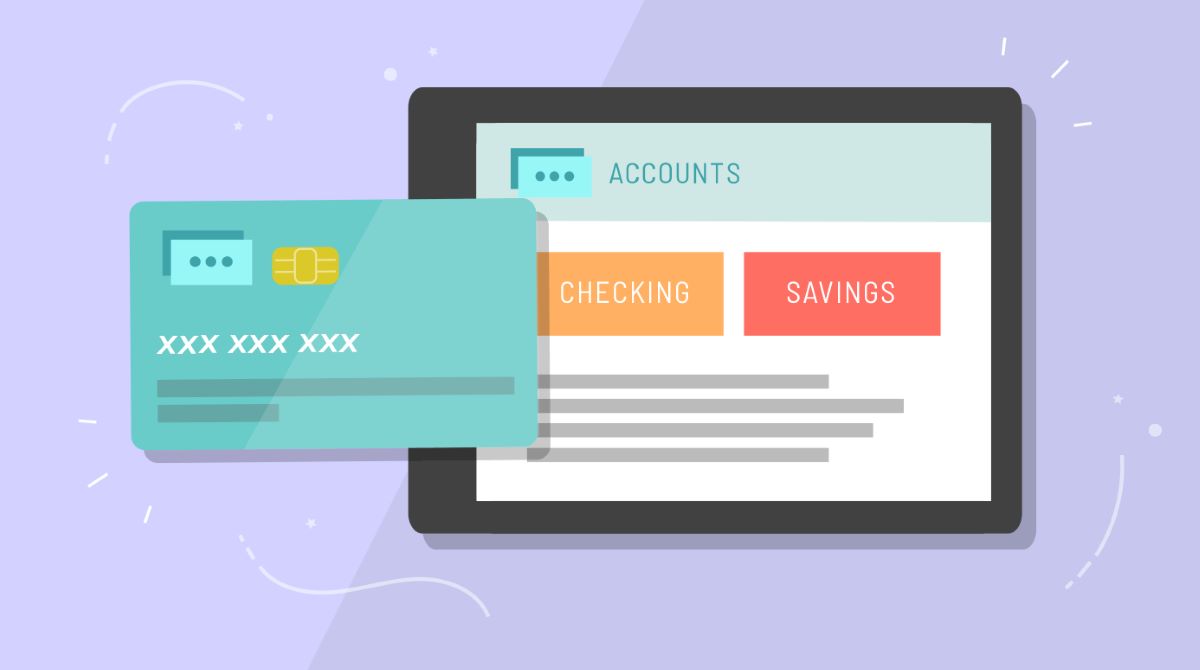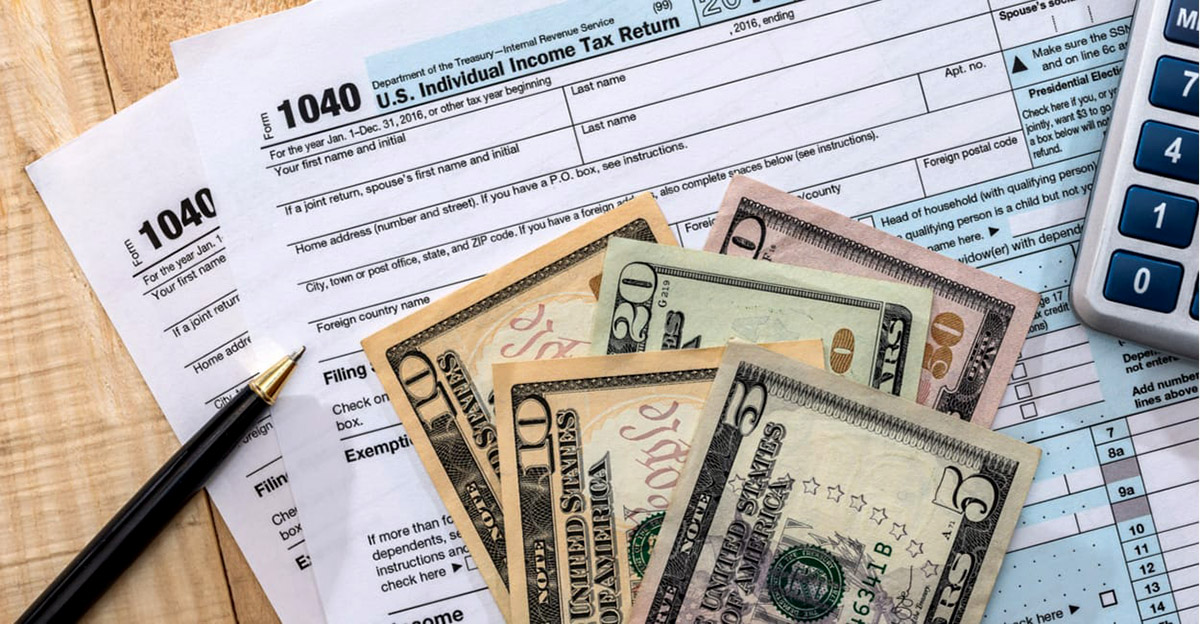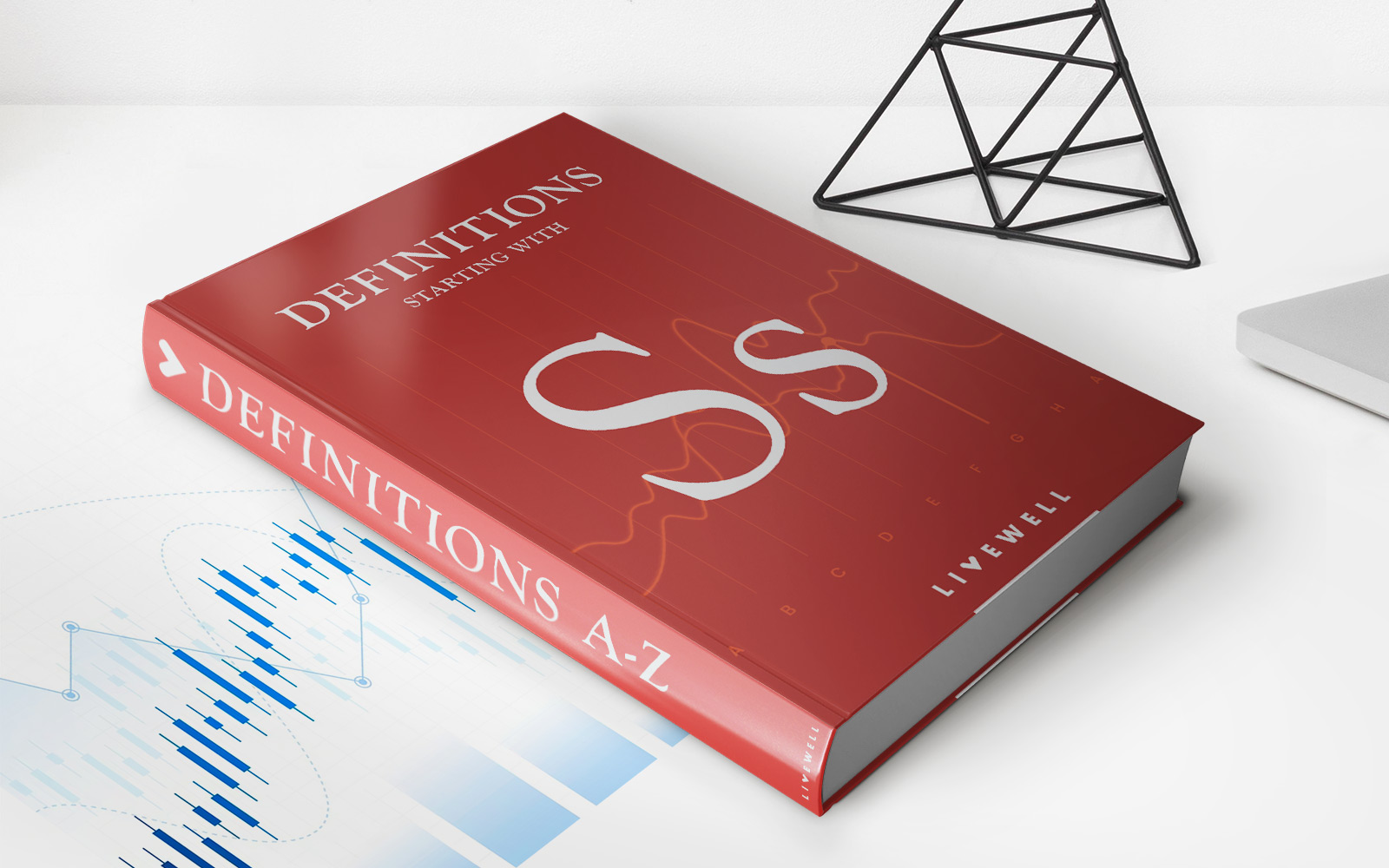

Finance
When Do You Get Your Pension
Published: November 27, 2023
Get answers to your finance questions and find out when you'll receive your pension. Plan your future with expert advice from our finance professionals.
(Many of the links in this article redirect to a specific reviewed product. Your purchase of these products through affiliate links helps to generate commission for LiveWell, at no extra cost. Learn more)
Table of Contents
Introduction
Welcome to the world of pensions! As you prepare for your future and start planning for your retirement, it’s essential to have a clear understanding of pensions and how they work. Whether you’re just entering the workforce or approaching retirement age, having a solid grasp of this topic is crucial in ensuring a financially secure future.
Pensions are a form of retirement income that provides individuals with a regular payment after they stop working. It serves as a way to replace a portion of your pre-retirement income and maintain your standard of living once you retire. Understanding the ins and outs of pensions is key to making informed decisions about your financial planning.
In this comprehensive guide, we will explore various aspects of pensions, including the different types of pensions available, the eligibility requirements, how pension benefits are calculated, and what factors influence your pension payments. We will also provide information on how to claim your pension benefits and explore the different payment options that may be available to you.
It’s important to note that the rules and regulations regarding pensions vary from country to country, so it’s always a good idea to familiarize yourself with the specific guidelines applicable in your jurisdiction. However, the general concepts and principles discussed in this article will provide a solid foundation for understanding pensions in any context.
Whether you’re a young professional just starting your career or someone nearing retirement, this article will equip you with the knowledge you need to make informed decisions about your pension and ensure a comfortable and secure retirement. So let’s dive in and explore the fascinating world of pensions!
Understanding Pensions
Pensions are long-term retirement savings plans designed to provide a steady income after you retire. They are typically offered by employers, government agencies, or self-administered retirement programs. The purpose of a pension is to ensure that individuals have a reliable source of income to support their lifestyle during their retirement years.
One of the distinguishing features of pensions is that they are typically funded by both the individual and their employer. Contributions to a pension plan are made over the course of an individual’s working years, allowing the money to grow through investments. The accumulated funds are then used to provide a regular income stream during retirement.
Unlike other retirement savings vehicles such as individual retirement accounts (IRAs) or 401(k) plans, pensions provide a guaranteed income for life. This means that once you start receiving pension payments, you will continue to receive them until you pass away, regardless of how long you live. This guaranteed income can be particularly valuable as it provides stability and security during your retirement.
Another important aspect of pensions is that they often come with specific eligibility requirements and vesting periods. These requirements determine when you are eligible to receive your pension benefits and how much you are entitled to. Vesting refers to the amount of time you must work for an employer before you become eligible to receive the employer’s contributions to your pension plan.
It’s important to understand that not all jobs or employers offer pensions. In recent years, many companies have shifted from traditional pension plans to defined contribution plans, such as 401(k) plans. While these plans still provide retirement savings, the responsibility for investing and managing the funds lies with the individual, rather than the employer.
Understanding the basics of pensions is crucial in planning for your retirement. In the following sections, we will delve deeper into the various types of pensions available, the specific eligibility requirements you may need to meet, and how pension benefits are calculated. Let’s continue our journey to unravel the intricacies of pensions!
Types of Pensions
There are several types of pensions available, each with its own features, eligibility criteria, and funding structures. Understanding the different types can help you determine which one is most suitable for your needs. Here are some of the most common types of pensions:
- Defined Benefit Pensions: Also known as traditional pension plans, defined benefit pensions are typically offered by employers and provide a guaranteed income based on a formula that takes into account factors such as salary history, years of service, and a predetermined multiplier. The responsibility for funding and managing the plan lies with the employer.
- Defined Contribution Pensions: Unlike defined benefit pensions, defined contribution pensions do not guarantee a specific income in retirement. Instead, the employer and/or employee contribute a set amount or percentage of the employee’s salary to an individual account, which is then invested. The final pension benefit is determined by the performance of the investments.
- Government Pensions: Many countries offer government-sponsored pensions, such as Social Security in the United States or the Canada Pension Plan. These pensions are funded through mandatory contributions from employees and employers and provide a steady income during retirement.
- Annuities: Annuities are a type of pension that individuals can purchase from insurance companies. They involve making a lump sum payment or a series of payments to the insurance company, which then provides a regular income stream for a specified period or for life.
- Individual Retirement Accounts (IRAs): IRAs are personal retirement accounts that individuals can contribute to on their own. There are two main types of IRAs: traditional IRAs, where contributions may be tax-deductible, and Roth IRAs, where contributions are made with after-tax dollars but withdrawals are tax-free during retirement.
- Self-Invested Personal Pensions (SIPPs): SIPPs are popular in the United Kingdom and give individuals more control over their pension investments. With a SIPP, individuals can choose where to invest their pension savings, including stocks, bonds, and other financial instruments.
It’s important to carefully consider the options and consult a financial advisor when selecting a pension. Different pension types have varying levels of risk, flexibility, and payout structures, so it’s crucial to choose the one that aligns with your retirement goals and risk tolerance.
In the next sections, we will explore the eligibility requirements for pension benefits and how to calculate the pension payments you may be entitled to. Stay tuned!
Qualifying for Pension Benefits
To qualify for pension benefits, you typically need to meet certain eligibility requirements set by pension plans or government agencies. These requirements can vary depending on the type of pension and the jurisdiction in which you reside. Here are some common factors that determine eligibility for pension benefits:
- Age: The most common eligibility factor for pensions is reaching a specific age. This age can vary depending on the pension plan or government program. In many countries, the standard retirement age is gradually increasing due to changes in life expectancy and economic factors.
- Years of Service: Some pension plans require a certain number of years of service with an employer or in a specific industry to be eligible for benefits. This could be a set number of years, such as 10 or 20, or it could be based on reaching a milestone, such as being vested in the plan.
- Contributions: In certain types of pensions, eligibility for benefits may depend on making regular contributions to the plan. This could be through payroll deductions, employer contributions, or personal contributions to an individual retirement account (IRA) or similar retirement savings vehicle.
- Disability or Early Retirement: Some pensions make exceptions for individuals who are disabled or retire before the standard retirement age. These individuals may be able to access their pension benefits earlier, although the amount of the benefit may be reduced due to the longer payout period.
- Survivor Benefits: Pensions may also provide benefits to surviving spouses or dependents of a deceased pension plan participant. The eligibility and amount of these survivor benefits can vary depending on the specific plan and circumstances.
It’s important to thoroughly review the eligibility criteria for the pension plan you’re participating in or considering. Understanding the requirements will help you plan your retirement timeline and ensure that you make the necessary arrangements to qualify for the pension benefits when you’re eligible.
Keep in mind that there may be additional factors or specific requirements based on the type of employment or the jurisdiction you reside in. It’s always a good idea to consult with a financial advisor or contact the pension plan administrator to get detailed information on the eligibility criteria for your specific situation.
Now that we have explored the qualifications for pension benefits, let’s move on to the next section where we will discuss the eligibility age for pension benefits. Stay tuned!
Eligibility Age for Pension
The eligibility age for pension benefits varies depending on the pension plan or government program. It is an important factor to consider when planning for your retirement. Here are some key points to understand about the eligibility age for pensions:
- Standard Retirement Age: Many pension plans and government programs have a standard retirement age that determines when you can begin receiving pension benefits. This age is typically set based on factors such as life expectancy, economic considerations, and demographic trends. The standard retirement age may vary from country to country or even within different pension plans.
- Early Retirement: Some pension plans allow for early retirement, which means you can start receiving benefits before the standard retirement age. However, early retirement may come with certain restrictions or reductions in the benefit amount. These could include reduced monthly payments or penalties for retiring before reaching the standard retirement age.
- Delayed Retirement: On the other hand, some pension plans offer the option to delay retirement past the standard retirement age. In such cases, the pension benefit amount may increase based on the additional years of service or delayed claiming. This can be particularly advantageous for those who wish to continue working and have the financial means to do so.
- Phased Retirement: In some instances, pension plans may offer phased retirement options. This allows individuals to gradually transition from full-time work to retirement by working reduced hours or in a different capacity while still receiving partial pension benefits. Phased retirement programs can provide flexibility and a smoother transition into retirement.
- Different Retirement Ages: It’s important to note that different pension plans may have varying eligibility ages, even within the same country or employer. For example, public sector employees may have a different retirement age than private sector workers. It’s crucial to familiarize yourself with the specific requirements of your pension plan to ensure you are aware of when you can start receiving benefits.
Understanding the eligibility age for pension benefits is essential for your retirement planning. It helps you determine the optimal time to retire and ensures that you have a realistic timeline for accessing your pension funds. Keep in mind that delaying retirement can often result in a higher benefit amount, while retiring early may have financial implications.
It’s advisable to review the details of your specific pension plan or consult a financial advisor to fully understand the eligibility age requirements and any associated implications for your retirement strategy.
Now that you have a better understanding of the eligibility age for pension benefits, let’s continue our exploration of pensions in the next section, where we will discuss how pension benefits are calculated. Stay tuned!
Calculation of Pension Benefits
The calculation of pension benefits can vary based on the type of pension plan or program you are enrolled in. However, in general, there are common factors that come into play when determining the amount of your pension payments. Here are some key aspects to consider when calculating pension benefits:
- Years of Service: The number of years you have worked and contributed to a pension plan is a significant factor in the calculation. Typically, the more years you have worked, the higher your pension benefit will be. Pension plans often use a formula that multiplies your years of service by a percentage or a specified amount to determine your benefit amount.
- Average Salary: Many pension plans use your average salary during a specific period, such as the last few years of your employment, to calculate your benefit amount. The higher your average salary, the higher your pension payments will be. This incentivizes individuals to focus on career advancement and higher earnings in the years leading up to retirement.
- Pension Formula: Some pension plans use a defined benefit formula to calculate your pension payments. This formula considers factors such as years of service, average salary, and a predetermined percentage or multiplier. By plugging these variables into the formula, your pension benefit amount is computed.
- Indexing and Cost-of-Living Adjustments: Certain pension plans provide periodic adjustments to pension benefits to account for inflation or changes in the cost of living. These adjustments help to ensure that the purchasing power of your pension payments is maintained over time.
- Other Factors: Depending on the specific pension plan, there may be additional factors that influence the calculation of pension benefits. This could include bonuses or contributions made by the employer, adjustments for early or late retirement, and survivor benefits for married participants.
It’s important to consult with your pension plan administrator or review the plan documents to understand the specific formula used to calculate your pension benefit. This will give you a clear idea of how your years of service, average salary, and other factors will contribute to your retirement income.
Additionally, it’s crucial to review any documentation or statements provided by your pension plan to ensure the accuracy of the calculations. If you have any questions or concerns about the calculation of your pension benefits, don’t hesitate to reach out to your plan administrator or seek guidance from a financial advisor.
Now that we have explored how pension benefits are calculated, let’s move on to the next section where we will discuss the factors that can affect your pension payments. Stay tuned!
Factors Affecting Pension Payments
Several factors can influence the amount of pension payments you receive. Understanding these factors will give you insight into how your pension benefits may be affected and allow you to make more informed decisions regarding your retirement planning. Here are some key factors that can impact your pension payments:
- Years of Service: The number of years you have worked and contributed to a pension plan is a significant factor in determining your pension payments. Generally, the more years you have worked, the higher your pension payments will be.
- Average Salary: The average salary you earned during your working years is another important factor. Pension plans often calculate benefits based on a percentage of your average salary. A higher average salary will result in higher pension payments.
- Benefit Formula: Many pension plans use a specific formula to calculate benefit amounts. This formula typically considers factors such as years of service and average salary. A change in the formula, such as an increase or decrease in the multiplier, can directly impact the amount of your pension payments.
- Early or Late Retirement: The timing of your retirement can affect your pension payments. Some pension plans may provide incentives for working beyond the standard retirement age, resulting in higher benefit amounts. Conversely, retiring early may lead to reduced pension payments due to a longer payout period.
- Investment Returns: For defined contribution pension plans or plans with investment components, the performance of the underlying investments can impact your pension payments. Higher returns may result in increased payments, while poor investment performance may lead to lower payments.
- Inflation and Cost-of-Living Adjustments: Some pension plans provide cost-of-living adjustments or indexing to account for inflation. This ensures that your pension payments keep up with the rising cost of living over time.
- Spousal Benefits: If you have a spouse, the terms of your pension plan may include options for survivor benefits. Choosing to provide a survivor benefit for your spouse can reduce your individual pension payments, but it provides financial security for your spouse after your passing.
- Taxation: The tax laws in your jurisdiction can also affect your pension payments. Depending on the tax rules, a portion of your pension payments may be subject to income tax, which can reduce the overall amount you receive.
It’s important to carefully review the details of your specific pension plan and consider these factors when estimating your retirement income. Consulting with a financial advisor can also provide valuable insights into how these factors may impact your overall retirement plan.
Keep in mind that some factors, such as changes in the pension plan formula or investment returns, may be beyond your control. However, being aware of these factors allows you to make informed decisions and adapt your retirement strategy as needed to maximize your pension payments.
Now that we understand the various factors that can influence pension payments, let’s move on to the next section, where we will discuss how to claim your pension benefits. Stay tuned!
Claiming Your Pension
After years of hard work and diligently contributing to your pension plan, the time to claim your pension benefits has finally arrived. The process of claiming your pension can vary depending on the type of pension plan or government program you are enrolled in. Here are some general steps to help guide you through the process:
- Contact Your Pension Administrator: The first step is to reach out to your pension plan administrator or the relevant government agency. They can provide you with the necessary forms and information required to initiate the pension claim process. It’s advisable to do this well in advance of your planned retirement date, as there may be specific timelines or requirements to follow.
- Gather Required Documentation: Before submitting your pension claim, you will likely need to gather certain documents. These may include identification documents, proof of birth, marriage certificates or divorce decrees (if applicable), and any other documentation requested by your pension plan administrator or government agency.
- Choose a Payment Option: Depending on your pension plan, you may have several payment options to choose from. Common options include receiving a monthly payment for life, selecting a joint-and-survivor option to provide for your spouse or beneficiary, or opting for a lump sum payment. Consider your financial goals, personal circumstances, and any applicable tax implications when making this decision.
- Submit Your Claim: Once you have completed the necessary forms and gathered the required documentation, submit your pension claim to your pension plan administrator or government agency. Be mindful of any deadlines or specific instructions provided to ensure a smooth and timely processing of your claim.
- Review and Confirm: After submitting your claim, you will receive a confirmation or acknowledgment from your pension plan administrator or government agency. Take the time to review the details and confirm that all the information provided is accurate. Contact them if you have any questions or notice any discrepancies.
- Start Receiving Payments: Once your pension claim has been approved, you can start receiving your pension payments. The frequency and method of payment will depend on your pension plan or government program. Payments are typically made on a monthly basis, either by direct deposit or through a physical check mailed to your designated address.
It’s crucial to stay informed throughout the pension claim process and be proactive in providing any additional information or documentation as requested by your pension plan administrator or government agency. Keeping track of your pension payments and reviewing your statements regularly will help ensure that you receive the correct amount and address any potential issues promptly.
Remember, every pension plan has its own guidelines and procedures for claiming benefits, so it’s important to follow the specific requirements outlined by your plan or program. If you have any uncertainties or need assistance, don’t hesitate to reach out to your pension plan administrator or seek guidance from a financial advisor experienced in retirement planning.
Now that you know how to claim your pension, let’s move on to the next section where we will explore the different payment options available for your pension benefits. Stay tuned!
Pension Payment Options
When it comes to receiving your pension benefits, you’ll typically have several payment options to choose from. The payment option you select will determine how you receive your pension and the financial benefits it provides. Here are some common pension payment options to consider:
- Single Life Annuity: With a single life annuity, you receive a monthly pension payment for the rest of your life. This option does not provide any continuing benefits to a spouse or beneficiary after your passing, but it usually maximizes the monthly payment amount.
- Joint and Survivor Annuity: This option provides a reduced monthly pension payment but ensures that your spouse or another designated beneficiary continues to receive a portion of your pension after your death. Common variations include a 50% or 100% joint and survivor annuity.
- Lump Sum Payment: Instead of receiving monthly payments, you may have the option to take a lump sum payment. This provides you with a one-time payout that represents the present value of your future pension payments. With a lump sum payment, you have greater control over how you invest and manage your retirement funds.
- Term Certain Annuity: With a term certain annuity, you receive a monthly payment for a specified period, such as 10, 15, or 20 years. If you pass away before the end of the specified term, the remaining payments may continue to a beneficiary or be paid as a lump sum, depending on the terms of the pension plan.
- Deferred Annuity: A deferred annuity allows you to delay receiving pension payments until a later date. This option can be useful if you plan to continue working or have other sources of income in the early years of your retirement. By deferring the payments, you may receive a higher monthly amount when you eventually start receiving your pension.
When deciding on a payment option, it’s important to consider factors such as your financial needs, lifestyle goals, and the level of financial security you desire for yourself and your loved ones. Each option has its own advantages and considerations, so it’s crucial to evaluate your personal circumstances and consult with a financial advisor to make an informed decision.
Keep in mind that some pension plans may have specific rules and restrictions regarding payment options. Review the details of your pension plan or consult with your plan administrator to fully understand the available options and any associated implications, such as possible reductions or limitations on certain choices.
By carefully considering and selecting the right pension payment option for your needs, you can ensure a financially stable and secure retirement that aligns with your goals and priorities.
Now that we have explored the different pension payment options, let’s move on to the next section, where we will discuss the taxation of pension payments. Stay tuned!
Taxation of Pension Payments
The taxation of pension payments is an important aspect to consider when planning for retirement. Depending on the country and specific tax laws, pension payments may be subject to certain taxes. Here are key points to help you understand the taxation of pension payments:
- Income Tax: In many jurisdictions, pension income is considered taxable income and is subject to income tax. The tax rate applied to your pension payments will depend on your overall income level and the specific tax brackets in your country.
- Tax-Deferred Contributions: If you made tax-deferred contributions to your pension plan during your working years, such as with a traditional 401(k) or IRA, the contributions were made on a pre-tax basis. When you receive payments from these plans, they are typically subject to income tax at the prevailing tax rates at that time.
- Roth Contributions: If you made contributions to a Roth 401(k) or Roth IRA, the contributions were made with after-tax dollars. As a result, when you receive payments from these plans during retirement, they are generally tax-free.
- Tax Credits or Deductions: Some jurisdictions offer tax credits or deductions specifically for pension income. These incentives may help reduce your overall tax liability or provide certain tax benefits for retirees.
- Required Minimum Distributions (RMDs): In some countries, including the United States, there may be rules regarding minimum distributions that must be taken from certain retirement accounts once you reach a certain age. Failure to take these distributions may result in penalties or additional taxes.
- Spousal Benefits: If you choose a joint and survivor pension payment option, where your spouse continues to receive benefits after your passing, the taxation of those benefits may differ from your own payments. It’s important to understand how spousal benefits are treated for tax purposes in your jurisdiction.
- Tax Treaties and Cross-Border Pensions: If you receive a pension from a foreign country or have worked abroad, there may be tax treaties in place to prevent double taxation. Ensure that you understand the tax implications of cross-border pensions and consult with a tax professional or financial advisor with international tax expertise.
It’s important to review the specific tax laws and regulations in your country or jurisdiction to fully understand how pension payments are taxed. Consulting with a tax advisor or financial planner with knowledge of retirement taxation can provide valuable insights into minimizing your tax liability and maximizing your retirement income.
Keep in mind that tax laws can change over time, so it’s important to stay informed and adapt your retirement strategy as needed to align with any new tax regulations or reforms.
Now that we have covered the taxation of pension payments, let’s move on to the next section where we will address some frequently asked questions about pensions. Stay tuned!
Frequently Asked Questions
Here are answers to some commonly asked questions about pensions:
- When should I start planning for my pension?
- Can I have more than one pension?
- What happens to my pension if I change jobs?
- Can I access my pension before the eligible age?
- What happens to my pension if I pass away?
- Can I continue working while receiving my pension?
It’s never too early to start planning for your pension. The earlier you begin saving and investing for retirement, the more time your funds have to grow and accumulate. Even if retirement seems far away, taking small steps now can greatly impact your financial security in the future.
Yes, it is possible to have multiple pensions. This can occur if you have worked for different employers who offer their own pension plans, or if you have contributed to both private and government pension programs throughout your career.
If you change jobs, the fate of your pension may vary. In some cases, you can transfer your pension contributions to a new employer’s plan or a private retirement account. Alternatively, you may have the option to leave your pension with your previous employer, where it will continue to accrue benefits until you are eligible to claim them.
In most cases, you cannot access your pension before the eligible age determined by your pension plan or government program. However, there may be exceptions for specific circumstances such as disability or early retirement. Check with your pension plan administrator or government agency to understand the rules and options available to you.
The treatment of your pension after your passing depends on various factors, including the type of pension plan and the payment option you selected. In some cases, your spouse or designated beneficiary may be entitled to receive survivor benefits. It’s important to review the terms of your pension plan regarding survivor benefits and consult with a financial advisor or estate planner to ensure appropriate financial provisions are in place.
In many cases, you can continue working while receiving your pension. However, there may be limitations on the amount of income you can earn before your pension payments are affected. Additionally, working while receiving a pension may have tax implications. It’s crucial to understand the rules and regulations applicable to your pension plan and consult with a financial advisor to determine the best course of action.
These are just a few common questions about pensions. The answers will vary depending on your specific situation, jurisdiction, and pension plan. It’s always best to consult with a financial advisor or pension plan administrator who can provide guidance tailored to your needs.
Now that we’ve addressed some frequently asked questions, let’s conclude our comprehensive guide to pensions.
Conclusion
Planning for your pension and understanding how pensions work is crucial for ensuring a financially secure and comfortable retirement. Throughout this comprehensive guide, we’ve covered various aspects of pensions, including their types, eligibility requirements, calculation methods, payment options, and taxation. Armed with this knowledge, you can make informed decisions that align with your retirement goals and financial needs.
Remember that pension plans can vary, and it’s essential to familiarize yourself with the details of your specific pension plan or government program. This will help you understand the rules, eligibility criteria, and available options that pertain to your retirement benefits.
As you embark on your retirement journey, it’s advisable to seek guidance from a financial advisor or retirement planner. They can provide personalized advice, help you develop a retirement strategy, and optimize your pension benefits. Additionally, regularly reviewing your pension statements and staying informed about any changes in tax laws or regulations related to pensions is important for staying on track and adapting your plans as needed.
Remember that pension planning is an ongoing process. Regularly revisit your retirement goals, evaluate your financial situation, and adjust your savings and investment strategies accordingly. By staying proactive and actively managing your pension, you can maximize its potential and enjoy a fulfilling and financially secure retirement.
We hope that this guide has provided valuable insights into the world of pensions and has equipped you with the knowledge necessary to make informed decisions about your retirement planning. As you take the next steps in your journey, may your pension be a reliable source of income that allows you to enjoy the fruits of your labor and live your retirement years to their fullest.














